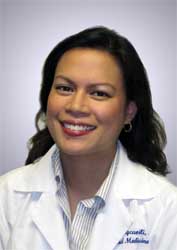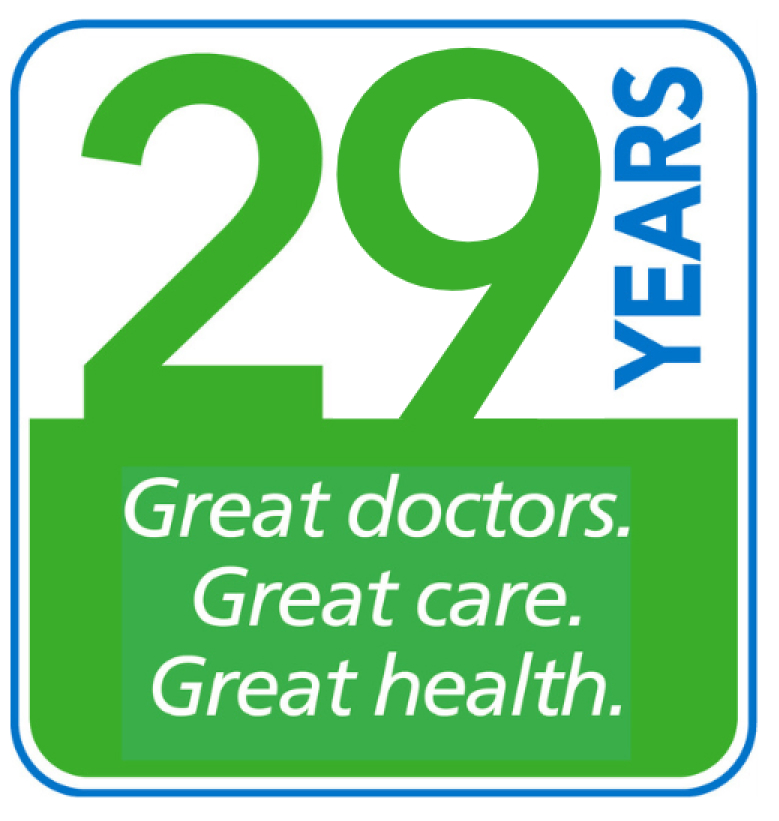Category Archives: Health & Wellness
Sadness – or Depression?
By Cecily Agcaoili, MD
Sadness can be confused with depression. You may feel sad after something bad has happened, like a relationship breakup, problems on the job or in school, or trouble with friends or family, but the feelings are normal and usually pass with time.
Depression is a medical condition with symptoms that last longer than two weeks. There is no simple answer for why depression happens. It can be brought on by unhappy events, illness or emotional stress, childbirth or weaning, but often there is no direct cause. Some people have genetic predispositions that make them prone to depression.
When it doesn’t go away
You may be suffering from depression if you continue to experience any of these symptoms for an extended time:
- Feeling sad or having a depressed mood
- Loss of interest or pleasure in activities you once enjoyed
- Changes in appetite — weight loss or gain unrelated to dieting
- Changes in sleep patterns – trouble sleeping or sleeping too much
- Loss of energy or increased fatigue
- Increase in purposeless physical activity (e.g., hand-wringing or pacing) or slowed movements and speech
- Feeling worthless or guilty
- Difficulty thinking, concentrating, or making decisions
- Thoughts of death or suicide
People with depression may also experience other problems, such as anxiety or panic attacks. They may also experience increased headaches, back or neck pain, or stomach discomfort.
Unfortunately, people who don’t understand that depression is a medical condition may treat it as a personal failure. They may tell you to “snap out of it” “or “pull yourself up.” Comments like that may cause a person who is depressed to feel worse. They may try to treat their symptoms with alcohol or drugs. These can help you feel better for a while but leave you feeling worse in the long term.
| Take this quick quiz to see if you may be affected by depression. |
Time for help
If you have been experiencing symptoms for at least two weeks without improvement, it’s important to get professional help. Your MPCP doctor or mental health professional can guide you through evaluation and treatment.
For many people, talking to a counselor or therapist helps them understand their depression and how to work toward recovery. In some cases, antidepressant medications can help and may be added to treatment.
Getting help can make a big difference in how quickly a person recovers. If you or someone you know is suffering from depression, seek help soon and take back control of your life.
Dr. Agcaoili is certified by the American Board of Internal Medicine and sees patients in MPCP’s Columbia office.
Birth Control Methods – Pros and Cons
By Julie Henne-Reese, Certified Registered Nurse Practitioner
There are many birth control methods to choose from, but they differ in ease of use, cost and effectiveness. Some are available over the counter while others require a prescription or a medical procedure. MPCP offers several products, including birth control pills, implants (Implanon and Nexaplanon) and IUDs (Mirena and Skyla).
The chart below lists some of the most effective birth control methods, with pros and cons for their use. The descriptions are only an overview and do not contain complete information. Talk to your medical provider about these and other methods to determine what works best for you.
Keep in mind, most birth control products don’t prevent the spread of sexually transmitted diseases (STDs). Your medical provider can advise you on how to stay safe.
Which Method is Right for You?
| Method | Effectiveness | Features | Pros | Cons |
|---|---|---|---|---|
| Birth Control Implant | 99% | Matchstick-sized rod that doctor places under the skin of woman's upper arm. Releases hormone to prevent pregnancy | Lasts 3-5 years. You don’t have to think about it | More expensive than other methods |
| IUD (Intrauterine Device) | 99% | Placed inside the uterus to prevent conception | Lasts 5-10 years. Low maintenance | More expensive, may cause irregular/heavy periods |
| Vasectomy | 99% | For men. Doctor surgically closes the tubes that carry sperm from the testes | Does not affect ejaculation | May not be reversible, more expensive |
| Tubal Ligation | 99% | Surgeon closes off the fallopian tubes, preventing eggs from leaving the ovaries | Very effective | May not be reversible, more expensive |
| Tubal Implants | 99% | Doctor puts a small metal or silicone implant inside each fallopian tube, blocking them and preventing ovulation test | Very effective, doesn’t require surgery | Not reversible, more expensive |
| Birth Control Shot | 97% | Hormonal shot protects against pregnancy for three months. It is injected four times a year | Since you don’t have to think about it, is usually better than birth control pills | More expensive. May cause spotting and other side effects |
| Birth Control Pill | 92%-95% | Uses female hormones estrogen or progestin to prevent ovulation | Very effective if used right. May cause more regular, lighter periods, or no periods | May cause breast tenderness, spotting, blood clots and raised blood pressure |
| Vaginal Ring | 92%-95% | Soft plastic ring goes inside the vagina. It releases the same hormones as the pill. A woman replaces it herself once a month | Works as well as the pill. May cause lighter, more regular periods | May cause vaginal irritation or other side effects similar to the pill |
| Male Condom | 84-89% | Latex condom blocks sperm from entering the woman's body | Inexpensive. One of the few birth control methods to prevent sexually transmitted diseases | Not reusable. Effective only if used correctly every time |
| Diaphragm | 84-89% | Rubber dome that a woman places over her cervix before sex. It is used with spermicide | Inexpensive | Doctor must initially fit it to ensure proper function |
| Cervical Cap | 84-89% | Similar to a diaphragm but smaller. Slips into place over the cervix. Used with spermicide | Inexpensive, can stay in place for 48 hours | Doctor must initially fit it to ensure proper function |
| Birth Control Sponge | 84-89% | Made of foam and contains spermicide. A woman can place it against her cervix up to 24 hours before sex | Effective immediately. Works about as well as the cervical cap | Can be hard to put in |
Julie Henne-Reese, Certified Registered Nurse Practitioner, is board certified by the American Nurses Credentialing Center in Family Practice. She sees patients in MPCP’s Queenstown office.
The Opioid Epidemic
By John Billon, M.D.
Commonly used narcotics, called opioids, have been in the news a lot lately. This can include heroin, and mediations that are commonly prescribed to treat pain, such as oxycodone and morphine. Unfortunately, opioid abuse has spread in recent years to infect communities across Maryland, putting neighbors – and even family members ─ at risk.
Who is abusing opioids?
The numbers of people abusing these medications and drugs are staggering and continue to increase. Almost a million people now use heroin. In 2016, there were on the order of 42,249 opioid related deaths. This is five times higher than 1999. The rate of infants born withdrawing from opiates has also increased five times over the same time period.
These numbers are hard to ignore. The increases in families affected have left people searching for information on the epidemic and how they can identify when their loved one has a problem.
Is abuse happening here?
Part of the difficulty of fighting the opioid epidemic is the personal myth that it cannot happen to you or a loved one. Recently, Anne Arundel County has an initiative, Not My Child, that spreads awareness and helps remind people that opioids can destroy lives and that the disease does not discriminate. The video, Not My Child, is worth a watch. Not My Child also has an excellent list of local resources to support those affected.
Signs to look for
Here are some signs to look out for if you suspect that a loved one is abusing opioids. Signs may include: emotional withdrawal, getting into trouble, doing worse at work or school, pupils that are small or bigger than normal, and new onset of seizures.
What you can do?
If you identify that your loved one is abusing opioids, they may claim to be just starting. Make sure to start getting them some help because sometimes the problem is further along than claimed. Contact your physician or consider calling the helpline from the Not My Child Program (410-768-5522) if you have questions about what to do or where to go for help.
Learn more
Symptoms of Opioid Addiction
General Information on Opioid Abuse
Dr. John Billion is certified by the American Board of Family Practice and sees patients in MPCP’s Arnold office.






